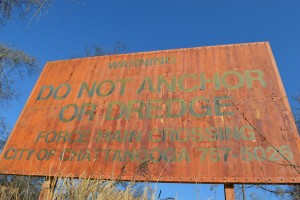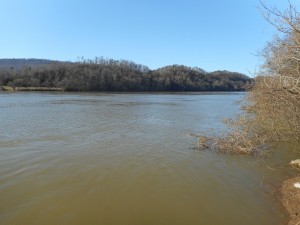Despite its pockets of natural beauty, Moccasin Bend represents a highly urbanized space due to the rapid human population influx into the Chattanooga area prior to Moccasin Bend Archeological District’s induction into the National Park Service. Though the majority of the eastern and southern portions of the landform are forested and protected as archeologically significant spaces the last few decades have brought about the construction of a golf course, psychiatric facility, and the Moccasin Bend Sewage Treatment Plant. These structures long predated the attempted salvation of this land significant to early humans in the Americas; the sewage plant came into being during 1961 and the park in 2001 (Collection System).
 The sewage treatment plant came to be out of a need for sewage recycling services with the growing population of the region; as of 2007 this plant served 220,000 residents as well as 102 of the industrial manufacturers in the region (Information). Despite this apparent human need, the land on which this site as well as the golf course and psychiatric hospital exist possesses incredible historical significance with human settlements on the peninsula dating back approximately 10,000 years (Moccasin Bend National Archeological District).
The sewage treatment plant came to be out of a need for sewage recycling services with the growing population of the region; as of 2007 this plant served 220,000 residents as well as 102 of the industrial manufacturers in the region (Information). Despite this apparent human need, the land on which this site as well as the golf course and psychiatric hospital exist possesses incredible historical significance with human settlements on the peninsula dating back approximately 10,000 years (Moccasin Bend National Archeological District).
Besides taking up a portion of this land that might otherwise have been protected for wildlife, cultural significance, and outdoor activity, the Moccasin Bend Sewage Treatment Plant also poses a possible ecological threat to the natural areas still within the region. There have been a number of smaller incidents involving the sewage treatment plant, including a spill in 2010 of over 100,000 gallons of raw sewage resulting in 3,600 fish deaths, a chlorine gas leak leading to two worker hospitalizations and a hazmat team being brought in, and the need for a city council vote and $3.2 million dollar fix for horrible odor emanating from the plant and disturbing local residents in 2012 (Sohn)(Hightower)( 2 Workers). From this it is clear to see that while a sewage treatment plant is a needed addition to any residential or urban center, a lack of maintenance can lead to potentially environmental hazardous outcomes in a space that is and should be protected from such encroachments.
 While the influx of large scale development such as that of the sewage treatment plant on Moccasin Bend should have come to an end due to the national park status of the land, there are still threats to the natural landscape. The Moccasin Bend Sewage Treatment Plant poses a possible threat moving forward for air and water quality and consistent monitoring and updating of older systems will be required for the preservation of this land so close in proximity to the urbanized spaces of Chattanooga.
While the influx of large scale development such as that of the sewage treatment plant on Moccasin Bend should have come to an end due to the national park status of the land, there are still threats to the natural landscape. The Moccasin Bend Sewage Treatment Plant poses a possible threat moving forward for air and water quality and consistent monitoring and updating of older systems will be required for the preservation of this land so close in proximity to the urbanized spaces of Chattanooga.
Authored by Julie Fowler
Citations
2 Workers Sent To Hospital After Chlorine Leak At Moccasin Bend Sewage Treatment Plant; Emergency Crews Answer 3rd Call. (2015, March 16). Retrieved February 25, 2016, from http://www.chattanoogan.com/2015/3/16/296036/2-Workers-Sent-To-Hospital-After.aspx
Collection System. (n.d.). Retrieved February 25, 2016, from http://www.chattanooga.gov/public- works/waste-resources/interceptor-sewer/wastewater-plant/44-public-works/727-collection-system
Hightower, C. (2012, February 14). The $3 Million Stink? Chattanooga Votes Tonight on Getting Rid of Smell. Retrieved February 25, 2016, from http://www.timesfreepress.com/news/news/story/2012/feb/14/chattanooga-wants-to-tame-smell-stinks/70628/
Information: Moccasin Bend Wastewater Treatment Plant and Pretreatment Program. (1996, April 22). Retrieved February 25, 2016, from http://www.bmpcoe.org/bestpractices/internal/chatt/chatt_16.html
Moccasin Bend National Archeological District. (n.d.). Retrieved February 25, 2016, from http://www.nps.gov/chch/learn/historyculture/moccasin-bend-national-archeological-district.htm
Sohn, P. (2010, August 10). Sewage Overflow Swamps Marina, Kills 3,600 Fish. Retrieved February 25, 2016, from http://www.timesfreepress.com/news/news/story/2010/aug/10/sewage-overflow-swamps-marina-kills-3600-fish/25982/